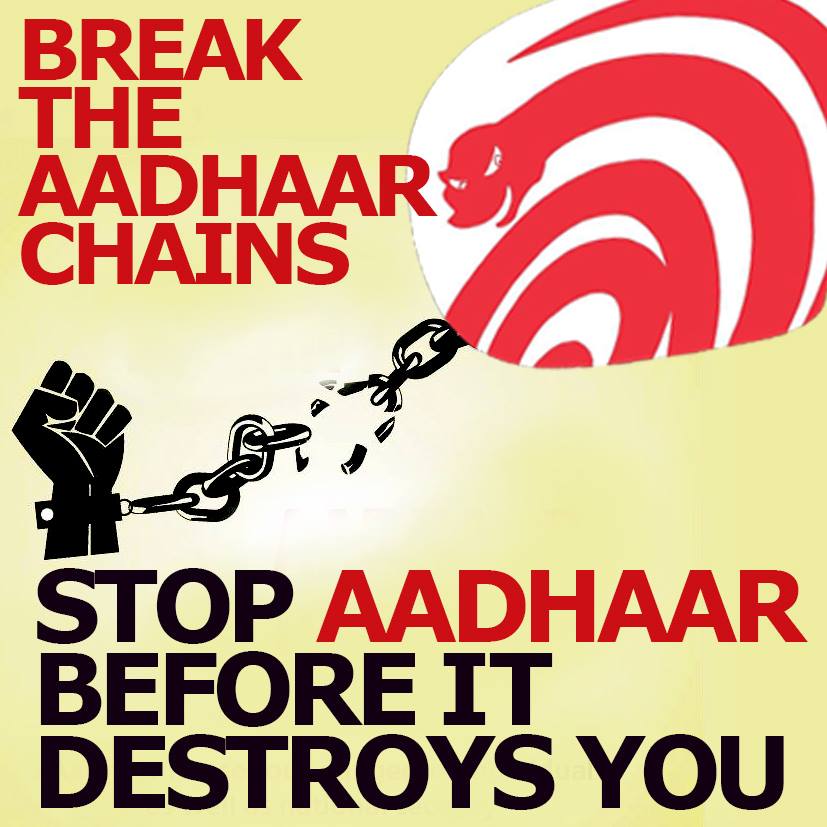The Aadhaar project deals a deadly blow to right to privacy and right to life.
It was deeply disappointing when the government of a democratic country argued before a nine-judge Supreme Court bench against the right to privacy as a fundamental right in mid-2017. The regressive arguments were made in the context of the Aadhaar challenge in Court.
From data privacy and bodily integrity on the one hand, to informational self-determination and the potential for personal data mining for targeted advertising, credit rating, etc. on the other, there are many ways in which Aadhaar project violates our right to privacy.
Worse, the creation of a virtual panopticon – unintended though it might be – has implications for personal data mining and for civil liberties and democracy. Most significantly, the privacy judgment explains how, far from being an elitist concept, a fundamental right to privacy is at the heart of a good democracy.
Contrary to the understanding of some, especially the government, the privacy judgment will help in containing the Aadhaar project because it threatens the right to life and right to privacy.
The privacy judgment made a passing mention of the circumstances in which the right to privacy can be ‘curtailed’. In particular, one paragraph of the 547-page judgment is often used to prop up Aadhaar. “The legitimate aims of the state would include for instance protecting national security, preventing and investigating crime, encouraging innovation and the spread of knowledge, and preventing the dissipation of social welfare benefits.” Those in favour of Aadhaar cling to this line, and brush away any concerns by saying that the data protection committee and a data protection law can take care of this all.
Recall, however, that J Chandrachud also noted that “the validity of a law which infringes the fundamental rights has to be tested not with reference to the object of state action but on the basis of its effect on the guarantees of freedom” (p.24). Simply put, what matters is the impact of Aadhaar on the right to life rather than the ‘legitimate aims of the state’.
More importantly, J Chandrachud also wrote that the “dignity of the individual”, among other things, is the “foundational pillars of the Indian Constitution.” Seven pages of his opinion, five pages of J Bobde’s are dedicated to explaining that ‘life with dignity’ is at the core of the Constitution.
Finally, and not entirely trivially, the word ‘dignity’ appears 202 times in the judgment and ‘right to life’, 76 times. In contrast, ‘dissipation’ and ‘spread of knowledge’ appear once each; ‘innovation’ (4) and ‘legitimate aim’ (7). Sadly, in the privacy debate, the more direct attack on the right to life with dignity due to Aadhaar was barely discussed.
Let me explain how the use of Aadhaar in welfare delivery is the anti-thesis of ‘life with dignity’ and endangers right to life.
In June 2017, we surveyed 900 households in Jharkhand. Some resided in villages that did not use Aadhaar-based biometric authentication (ABBA), others in villages where ABBA is compulsory. In both sets of villages, households that were able to buy their grain reported getting 93% of their grain. ABBA had done nothing to reduce corruption.
What ABBA has done is to increase people’s troubles because of technology failures (failure of biometric authentication, server, electricity, internet issues, etc). Transaction failures were five times higher in ABBA villages than in non-ABBA villages.
More recently, in a verification of cancelled pensioners in Khunti (Jharkhand), we met elderly persons who are immobile, had been unable to link Aadhaar, and had consequently lost their monthly pension (Rs. 600) since late 2016. Several were unaware of the Aadhaar-linking requirement, in other cases, no one could help them with the necessary paperwork.
Indignities apart, such exclusions have cost lives. There have been nine starvation deaths that are related to Aadhaar-related disruption in the PDS and social security pensions. All the victims belong to vulnerable groups: e.g., an 11-year old Dalit girl, Santoshi (the family’s ration card was cancelled as they were unable to link Aadhaar), a Santhali tribal , Ruplal Marandi (no one’s fingerprints could be authenticated at the ration shop), two widows (their pension and rations were disrupted due to Aadhaar-related reasons).
Some of these exclusions contribute towards what the government presents as savings due to Aadhaar. For instance, Santoshi’s family’s ration card was cancelled because her family had not been able to link their Aadhaar number to the PDS database. They were counted among the ‘ghosts’ that were discovered by Aadhaar-linking. The Food minister of Jharkhand has publicly admitted this mistake.
The government claims of savings due to Aadhaar and that “the poor man is happy and feels empowered” are completely at odds with the evidence.What the government believes is the strongest case for Aadhaar (i.e., welfare programmes), is actually where it has caused the most damage to the right to life with dignity.
source- Business Standard

January 18, 2018 at 3:29 pm
Thanks for the post
January 20, 2018 at 5:11 pm
The elaborate write up explains the dangers of exclusion of people from essential schemes